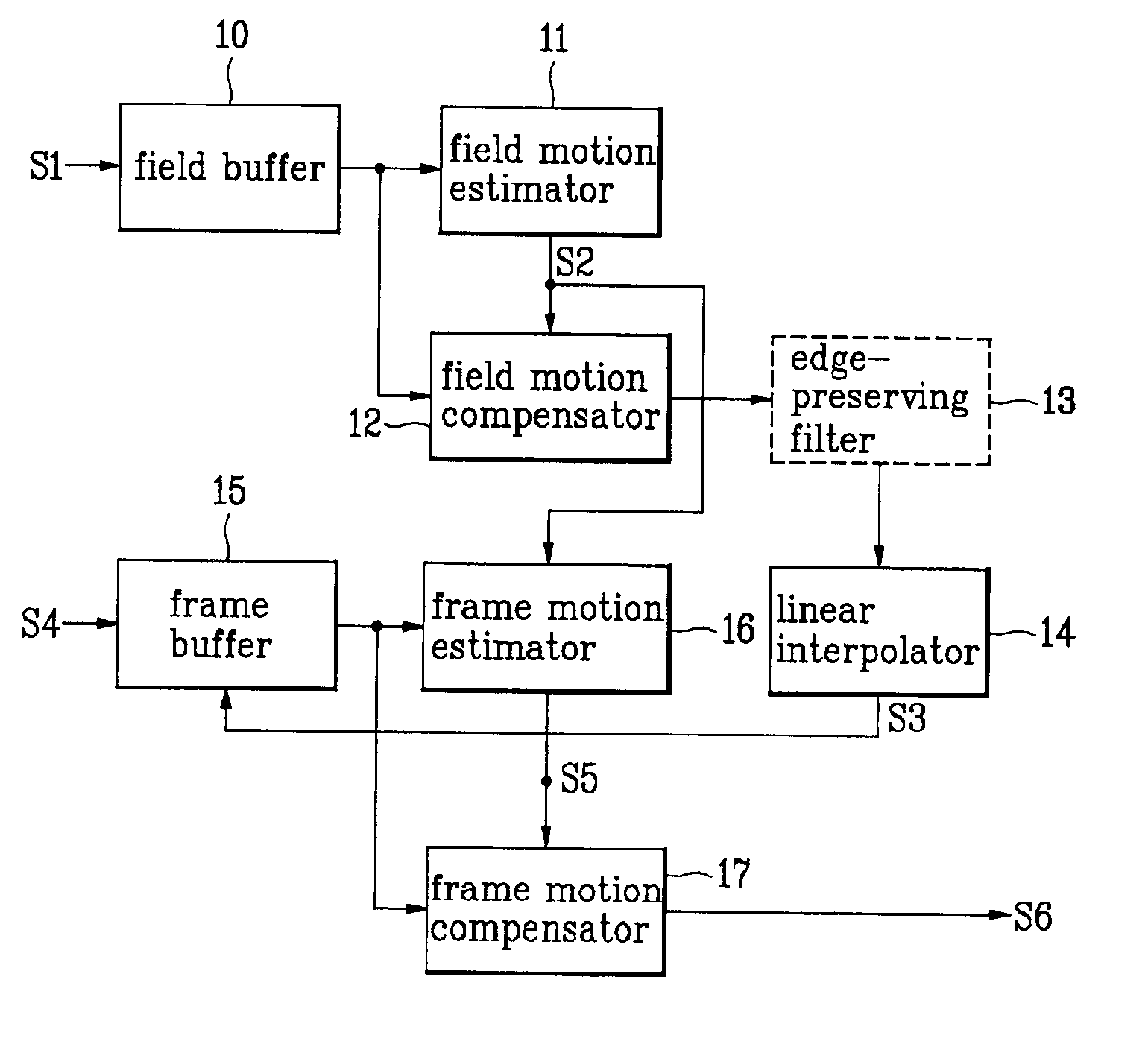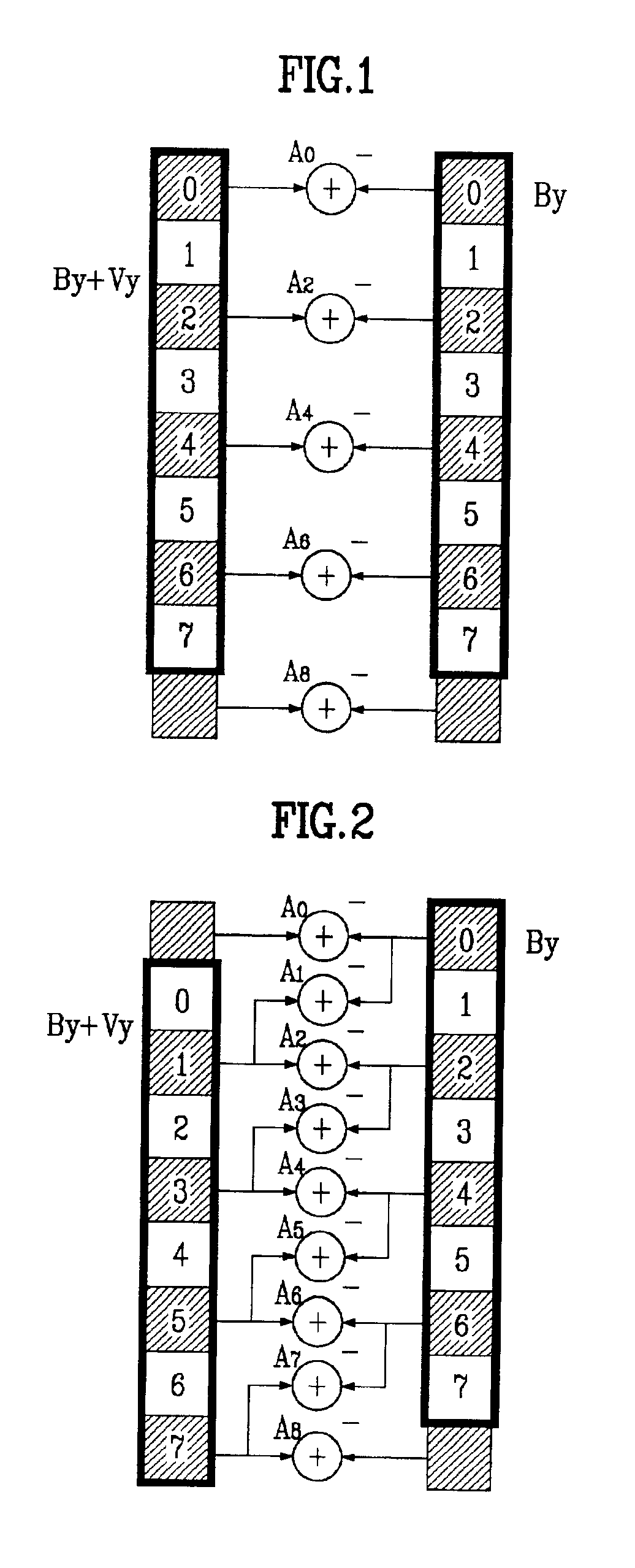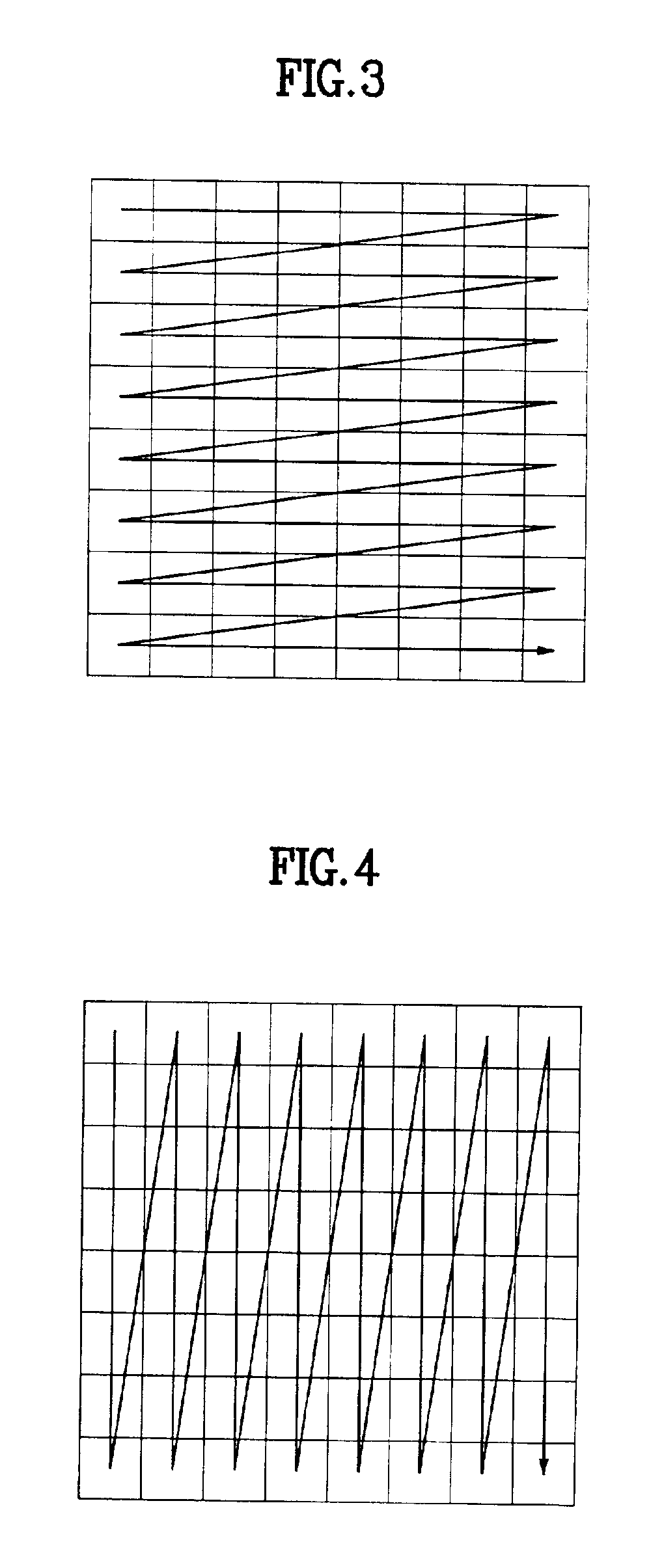Scan conversion apparatus
a conversion apparatus and scanning technology, applied in the direction of signal generators with optical-mechanical scanning, picture reproducers using projection devices, television systems, etc., can solve the problems of significant deformation of display quality, inefficient use of available information, and reduced screen spatial resolution, so as to achieve the effect of smoother slanting lines of images
- Summary
- Abstract
- Description
- Claims
- Application Information
AI Technical Summary
Benefits of technology
Problems solved by technology
Method used
Image
Examples
Embodiment Construction
[0030]Reference will now be made in detail to the preferred embodiments of the present invention, examples of which are illustrated in the accompanying drawings.
[0031]Generally, in order to estimate the motion between two frames, an image is first divided into several sub-images, and then the motion of each divided sub-image is estimated. Correlations between a current sub-image (a sub-image in a current field) and sub-images of the reference fields spatially located close to the current field are initially evaluated, and the optimal sub-image of reference field that has the shortest distance from the current sub-image is determined.
[0032]Although the size of each sub-image is normally variable depending upon the size of the entire image or the volume of calculations, a size of 16 by 16 is typically used. However, this size is usually appropriate for an encoding process, but rather a smaller size is desired for handling interpolations or compensations of motions. A size of 8 by 8 is...
PUM
 Login to View More
Login to View More Abstract
Description
Claims
Application Information
 Login to View More
Login to View More - R&D
- Intellectual Property
- Life Sciences
- Materials
- Tech Scout
- Unparalleled Data Quality
- Higher Quality Content
- 60% Fewer Hallucinations
Browse by: Latest US Patents, China's latest patents, Technical Efficacy Thesaurus, Application Domain, Technology Topic, Popular Technical Reports.
© 2025 PatSnap. All rights reserved.Legal|Privacy policy|Modern Slavery Act Transparency Statement|Sitemap|About US| Contact US: help@patsnap.com



